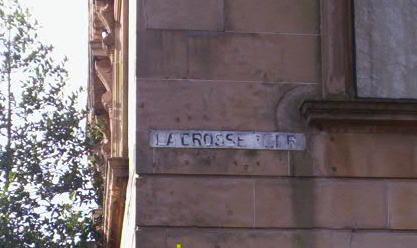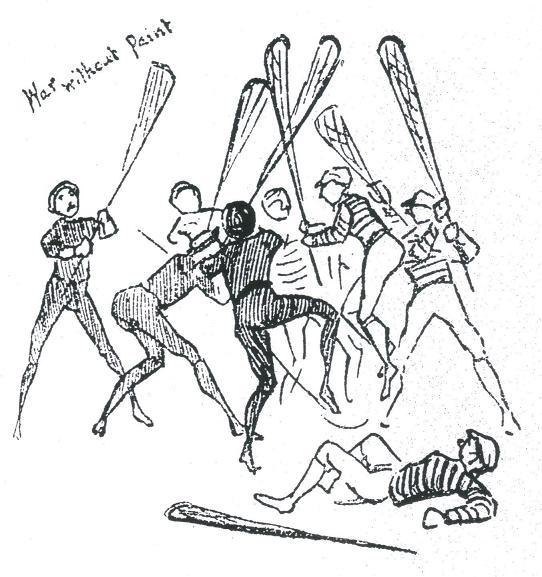

| Home Contents Contact |
|
|

It’s 1876 and with just over five weeks to go ‘til Custer’s Last Stand, Scotland’s national sport is up for grabs. Association football, otherwise variously known as soccer and fitba’, is beginning to assert itself but Rangers are only getting going and as for Celtic, they are but a distant twinkle in Brother Walfrid’s eye. There are however other options. These include the highly improbable candidates of rowing and lacrosse, a distant relation of shinty, a twelve-aside team game played with a ball a racquets, first devised by Native Americans and later adopted as the national sport of Canada. Its name arises from its designation by a Frenchman, Charleroix, as le jeu de la crosse, after the form of the racquet’s frame.
The Caledonian Cricket and Lacrosse Club, then based at Kelvinbridge, off the Great Western Road, organised exhibition matches between touring teams of Iroquois and Canadian ‘Gentlemen’, i.e. whites, on Friday, 19th and Saturday, 20th May 1876.
The Indians, by way of contrast with their more conventionally attired opponents, enhanced the spectacle by appearing in full and colourful Indian costume.
The half-time entertainment included a match which afforded the team of locals fielded by the Caledonian an opportunity to get involved. However, on the weight of the available historical evidence, it never really caught on, although these remarkable events are commemorated in the name of Lacrosse Terrace. The visitors then staged a race in snowshoes over hurdles. The band of the 105th Highland Regiment was also in attendance.
The Iroquois lacrosse players returned in 1883. The West of Scotland Cricket Ground in Hamilton Crescent, in the district of Partick, is justly famed as the site of the first ever international football match, between Scotland and England, in 1872. On Friday, 18th, and Saturday, 19th May 1883, it received the added distinction of being selected as the Glasgow venue for a re-run of the briefly-successful formula of 1876.
The Iroquois team had evidently undergone much acculturation in the intervening period and, to the great disappointment of many, took the field in what one journalist described as ‘ordinary football costume’ (Quiz, 25th May 1883) of red hose and jerseys. (The whites were kitted out in blue knickerbocker suits.) However, the Indians did at least make definite concessions to cultural expectations, taking the opportunity to sell native artifacts to the spectators. They were also known to emit war-whoops in celebration of scoring a goal.
The other Scottish venues included on the 1883 touring itinerary were Dumfries, Aberdeen, Inverness, Dundee, Edinburgh, and Greenock.

Quiz, 25th May 1883
(by courtesy of the Mitchell Library, Glasgow City Council)


